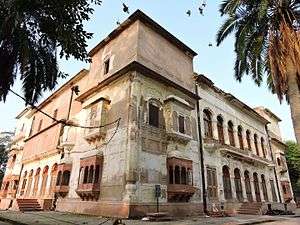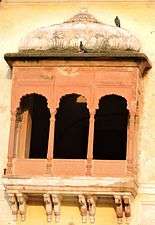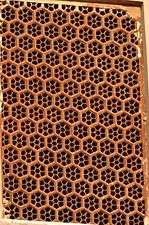Ram Bagh Palace

| Ram Bagh Palace | |
|---|---|
 Ram Bagh Palace,Amritsar | |
| General information | |
| Architectural style | Mughal architecture |
| Town or city | Ram Bagh Palace, Amritsar Punjab. |
| Country | India |
| Coordinates | 31°22′54″N 74°31′28″E / 31.3818°N 74.5245°E |
| Completed | 1819 |
| Cost | Rs.1,25,000 |
| Client | Faqir-Aziz-ul- Din Desa Singh, Lehna Singh Majithia |
| Technical details | |
| Structural system | Red Stone |
Ram Bagh Palace, was the palace of Maharaja Ranjit Singh, founder of Sikh Empire in Punjab, India. It was used as summer palace by Ranjit Singh. The palace is situated in the center of a garden popularly known as Ram Bagh or Barandari.[1] The whole Ram Bagh complex including Rambagh Palace is declared as protected monument vide Punjab Government notification number 1/14/97- TS /2051, dated October 10, 1997.[2]
History and background
Maharaja Ranjit Singh had a deep interest in the development and beautification of various areas under his rule.Amritsar being the central hub of spiritual and cultural activities of Sikh Empire and stronghold of Bhangi Misl got special attention of Ranjit Singh. He used to visit the Amritsar city on occasions of Vaisakhi, Vijayadashami and Diwali etc. Therefore he made a beautiful garden on the Mughal pattern of Shalimar Gardens, Lahore. The Rambagh Palace was built in the middle of the Ram Bagh, Amritsar. The palace was constructed under the supervision of Faqir-Aziz-ul-Din, Desa Singh and Sardar Lehna Singh Majithia all having close relationship with the Maharaja. The red-stone work of all these buildings was executed by workmen brought from Delhi by Faqir-Aziz-ud-Din.
After the death of Maharaja Ranjit Singh, many old buildings were taken over by the Britishers.in recent years the Palace as well as other building and monuments in the Ram Bagh complex were under threat due to encroachment, or lack of conservation.keeping it in view the state Government of Punjab has declared the whole complex as ‘protected’ area" vide notification dated April 10, 1997, to be maintained as an ancient and historic places under Section sub-section 4 (1) of the Punjab Ancient and Historic Buildings and Sites Act, 1964.[3] The luxurious two-storeyed summer palace (now called baradari) was built at the cost Rs 1,25,000. Ranjit Singh used the central building as his residence during his visits to Amritsar whereas the small palaces were provided for the chiefs. There was a swimming bath for the ladies of the royal household adjoining the palace.
Gallery
 Front view.
Front view. Left and front Side view.
Left and front Side view. Left side view.
Left side view. Left and back view.
Left and back view. Balcony.
Balcony. Grill on window.
Grill on window. Hallway.
Hallway. Interior design.
Interior design.